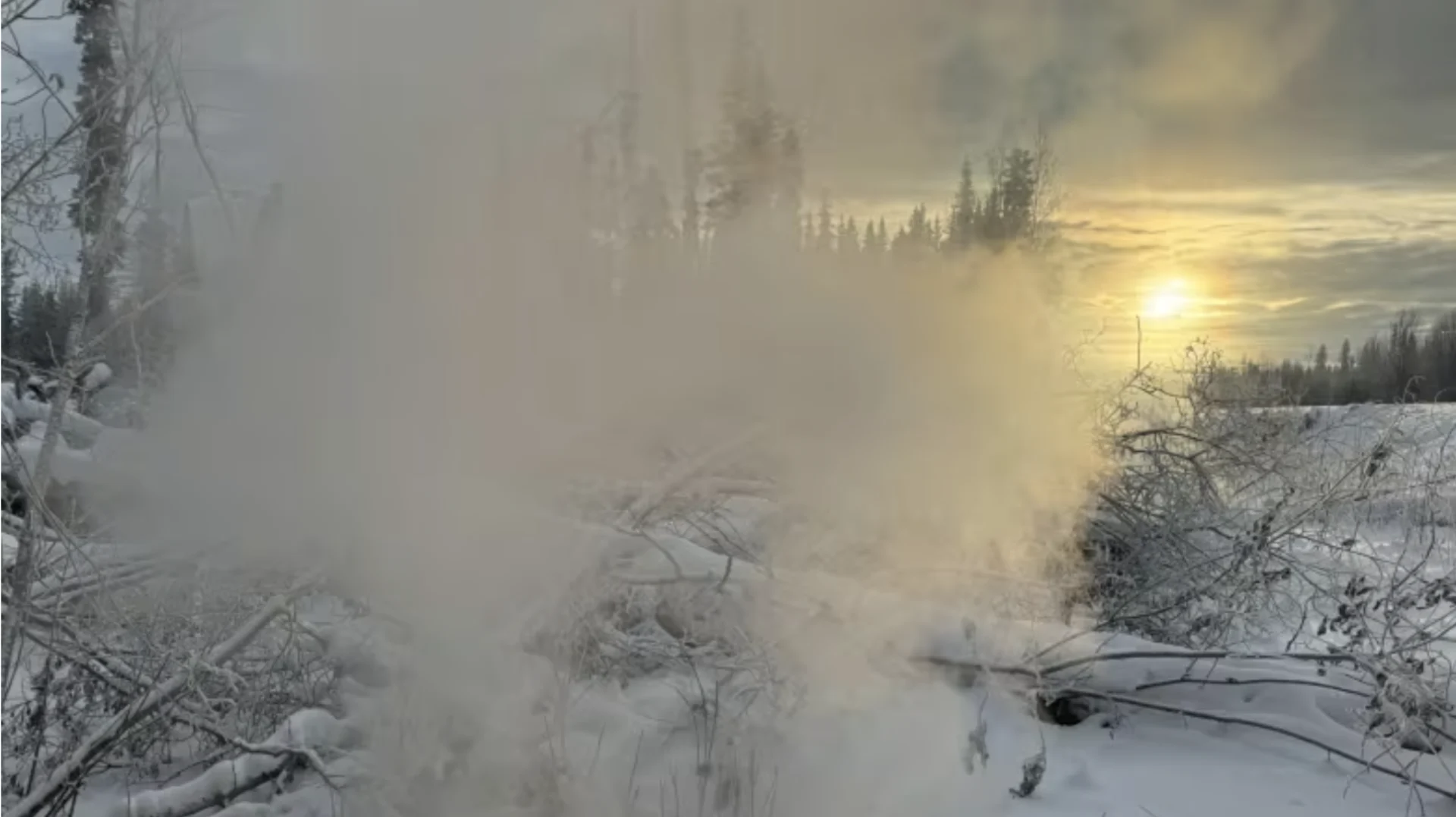
It's the middle of winter, and more than 100 wildfires are still smouldering
After a gruelling eight months battling wildfires in British Columbia, Sonja Leverkus was looking forward to a break.
But with many fires still smouldering, she worries it won't be long until she's fighting flames again.
"It still feels like we haven't had enough time to get recovered, let alone get ready, because here we go again," said Leverkus, a wildland firefighter crew leader who lives in Fort Nelson, B.C.
There are still 92 active fires in British Columbia and another 54 in Alberta — holdovers from last year — according to the latest figures from the Canadian Interagency Forest Fire Centre. Others are also active in the Northwest Territories, experts said.
Fires that simmer below the surface in winter are sometimes called "zombie fires" or "overwintering fires."
Often, they are visible to the naked eye only by small plumes of smoke that billow into the winter sky.

Updated as of Feb. 20, 2024: Active fires in B.C. and Alberta. Source: Canadian Interagency Forest Fire Centre (CIFFC) (CBC)
RELATED: Alberta government declares ‘early start’ to wildfire season
One of them is about 40 kilometres from Fort Nelson, she said. Concerned residents have been sending her videos and photos of smoke from the smouldering fires, which have persisted even through frigid weather.
"A lot of people talk about fire season and the end of the fire season, but our fires did not stop burning in 2023," said Leverkus, who is also an adjunct professor researching wildfire at the University of Alberta.
"Our fires dug underground and have been burning pretty much all winter."
On Tuesday, Alberta called an early start to the wildfire season, 10 days earlier than usual, due to concern about the season ahead.
WATCH | Increasing number of winter wildfires in Alberta
'The dice are loaded'
Research suggests such fires are becoming more common as the climate warms. The hot, dry conditions that contribute to powerful wildfires during the summer can lead to deep burning in carbon-rich soils like peat.
In such cases, a fire can simmer underground for days, weeks or even months after the flames subside.
Last summer's record-setting wildfire season, coupled with the drought-like conditions that persist in parts of British Columbia and Alberta, have made the situation this winter more worrisome, said Mike Flannigan, a wildfire expert and professor at Thompson Rivers University in Kamloops, B.C.
Over the summer, some fires grew so large they are nearly impossible to stamp out during the winter months, Flannigan says. The Donnie Creek fire in northeastern B.C., for instance, was larger than Prince Edward Island.
Jennifer Baltzer, an associate professor in the department of biology at Wilfrid Laurier University in Ontario, says the spike in overwintering fires in Western Canada is highly unusual.
"It's not something I've seen in any of the data sets," said Baltzer, who researches overwintering wildfires. "What we don't know is how many of these will actually translate to reignition in the spring."
The conditions in the coming months will go a long way in determining whether this will lead to another early start and major year for wildfires.
"It depends on the day-to-day weather that we'll see in the spring," Flannigan said.
"The dice are loaded, the deck is stacked — whatever phrase you want to use, there is a high likelihood of a very active spring."

Canada's abnormally dry winter. Source: Agriculture and Agri-Food Canada (CBC)
Response varies by province
In a recent bulletin, the B.C. Wildfire Service said it is monitoring fires in the province, saying it has "protocols in place to patrol large fires when weather conditions could allow holdover fires to show themselves."
"Personnel are currently monitoring existing fires as conditions allow and are establishing response priorities," the statement said.
"As additional resources return, appropriate actions will be taken when and where possible."
In Alberta, crews have been proactive in trying to put out smouldering fires and announced Tuesday they would hire 100 more crew members.
"Our firefighters are always monitoring fires in the winter, so we're taking flights and checking out some of our carryover fires," Victoria Ostendorf, a wildfire information officer for the High Level Forest area, recently told CBC News.
"But it's not as common to see as many carryover fires as we have this winter."
Quebec, which experienced a record-setting wildfire season last year, does not have any reported active fires. A spokesperson for the province's wildfire agency, said overwintering fires are rare in Quebec.
WATCH | Early wildfire season declared in Alberta, here's what that means
Visit The Weather Network's wildfire hub to keep up with the latest on all wildfires across Canada
What's next?
Going forward, Baltzer says fire management authorities will need to more closely monitor overwinter fires, given the likelihood they will become more common and reignite in spring.
"This is yet another indication of the impact of climate warming on these systems," she said.
While her crew is off for the winter, Leverkus said many are already preparing their gear and giving training sessions for the spring season, which she anticipates will start earlier than usual.

A fire smoulders underground near Fort Nelson, B.C. There are still 92 active wildfires in British Columbia and another 54 in Alberta, despite frigid winter weather. (Submitted to CBC by Sonja Leverkus)
In January, Leverkus hosted a community meeting in Fort Nelson to discuss the challenges ahead. Many raised concerns about being forced to leave their homes this summer.
Already, on many days in Fort Nelson, the scent of "damp-smelling smoke" hangs in the air, she said.
"It's not exciting and sexy like in the summer, but it is smoking," Leverkus said.
This article, written by Benjamin Shingler, was originally published for CBC News.










